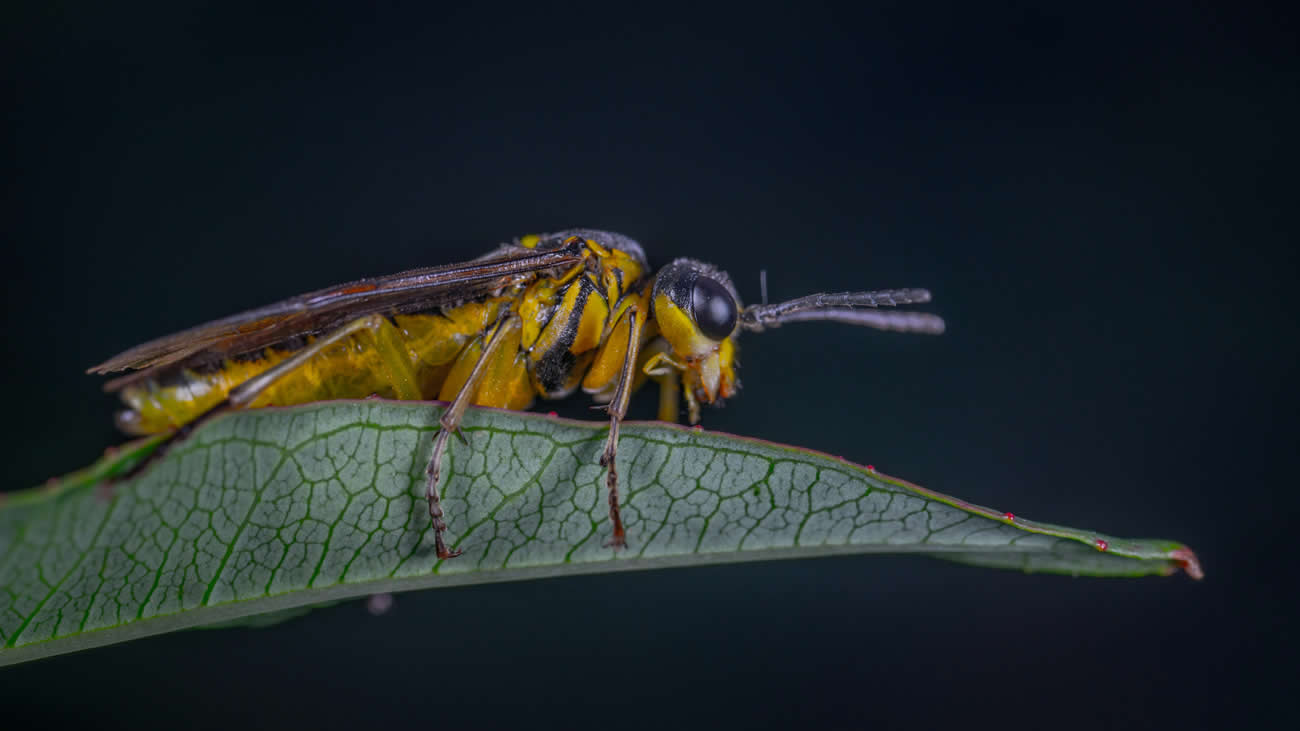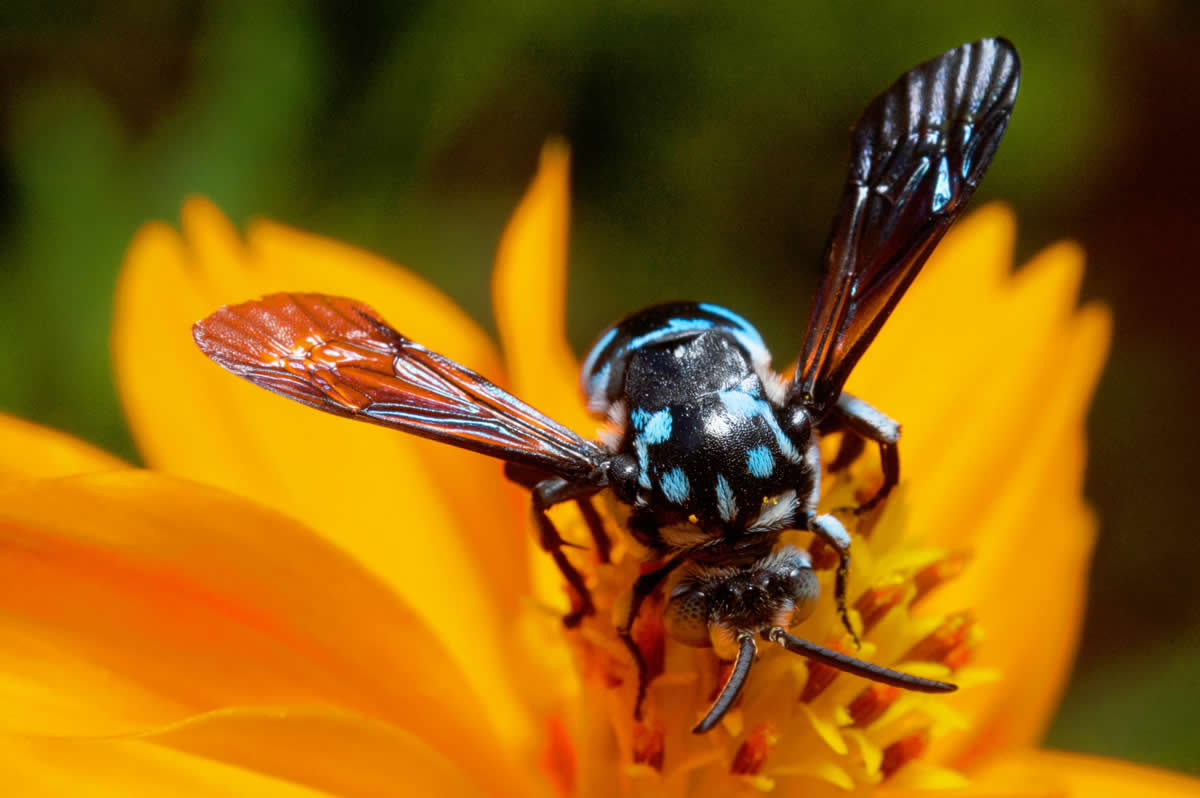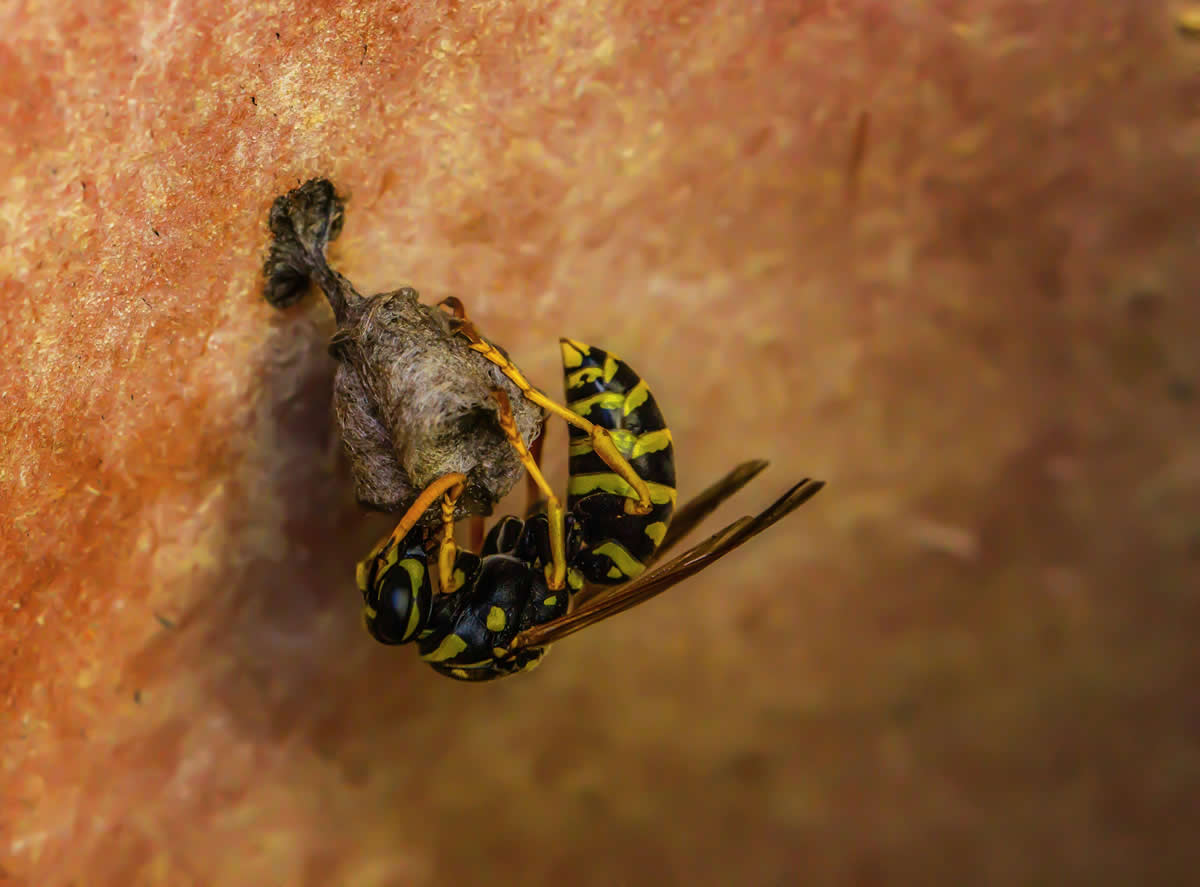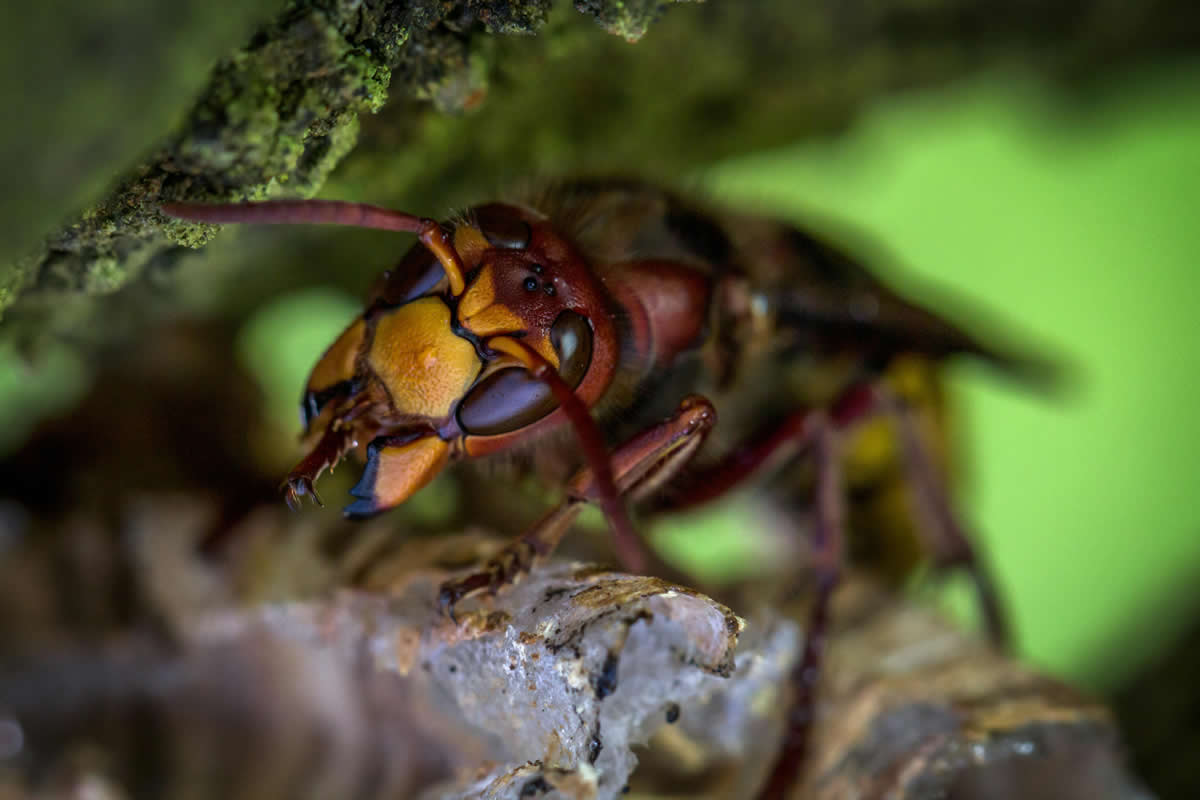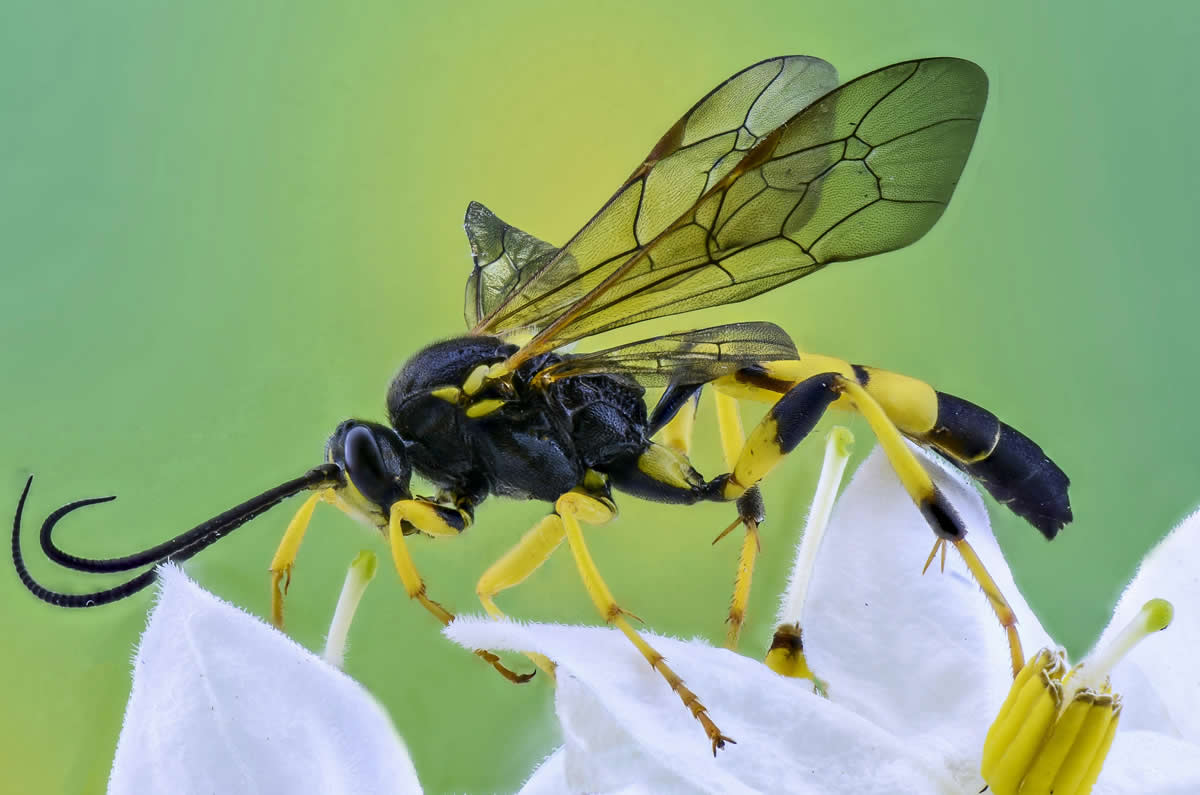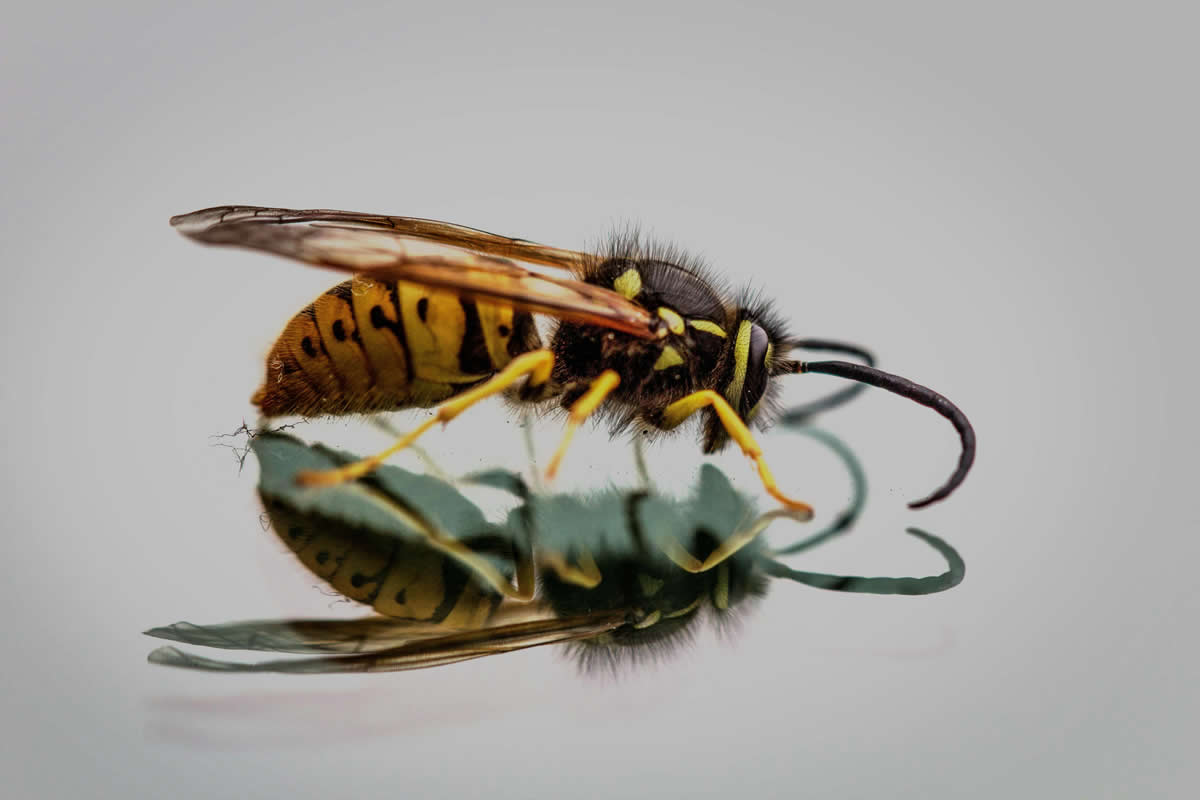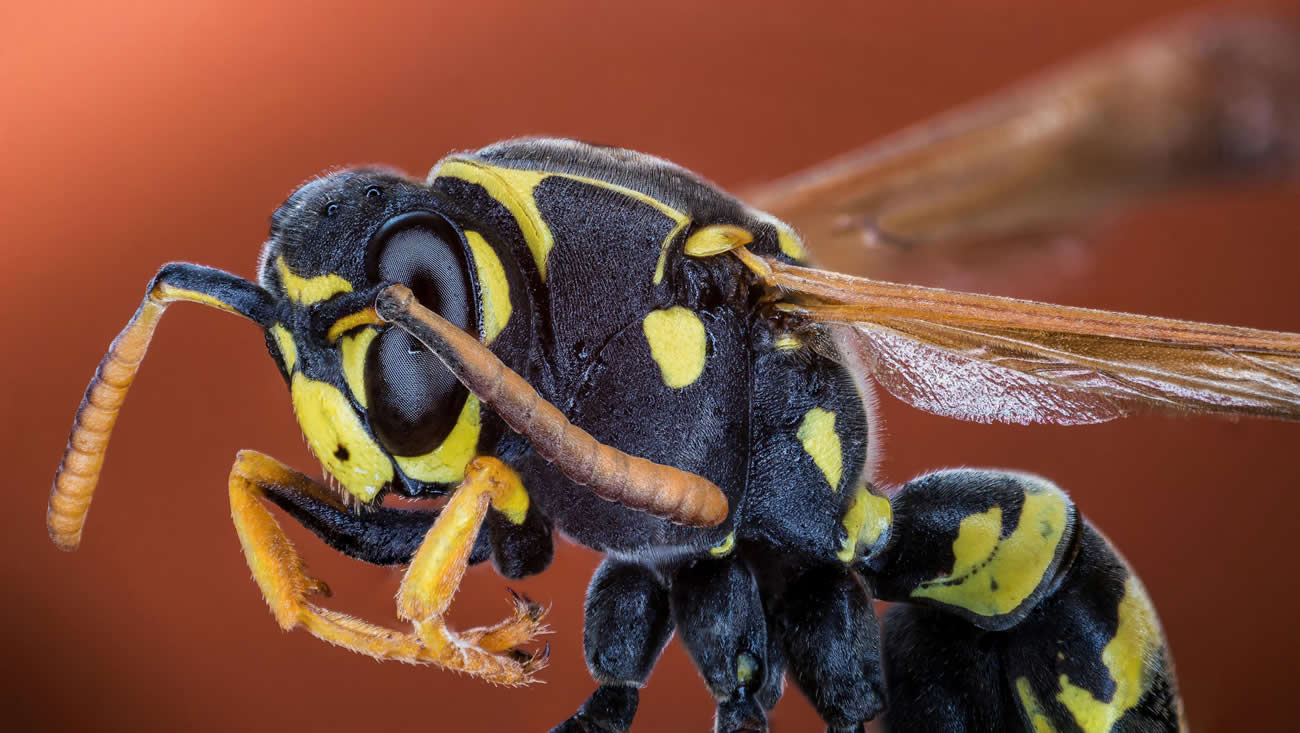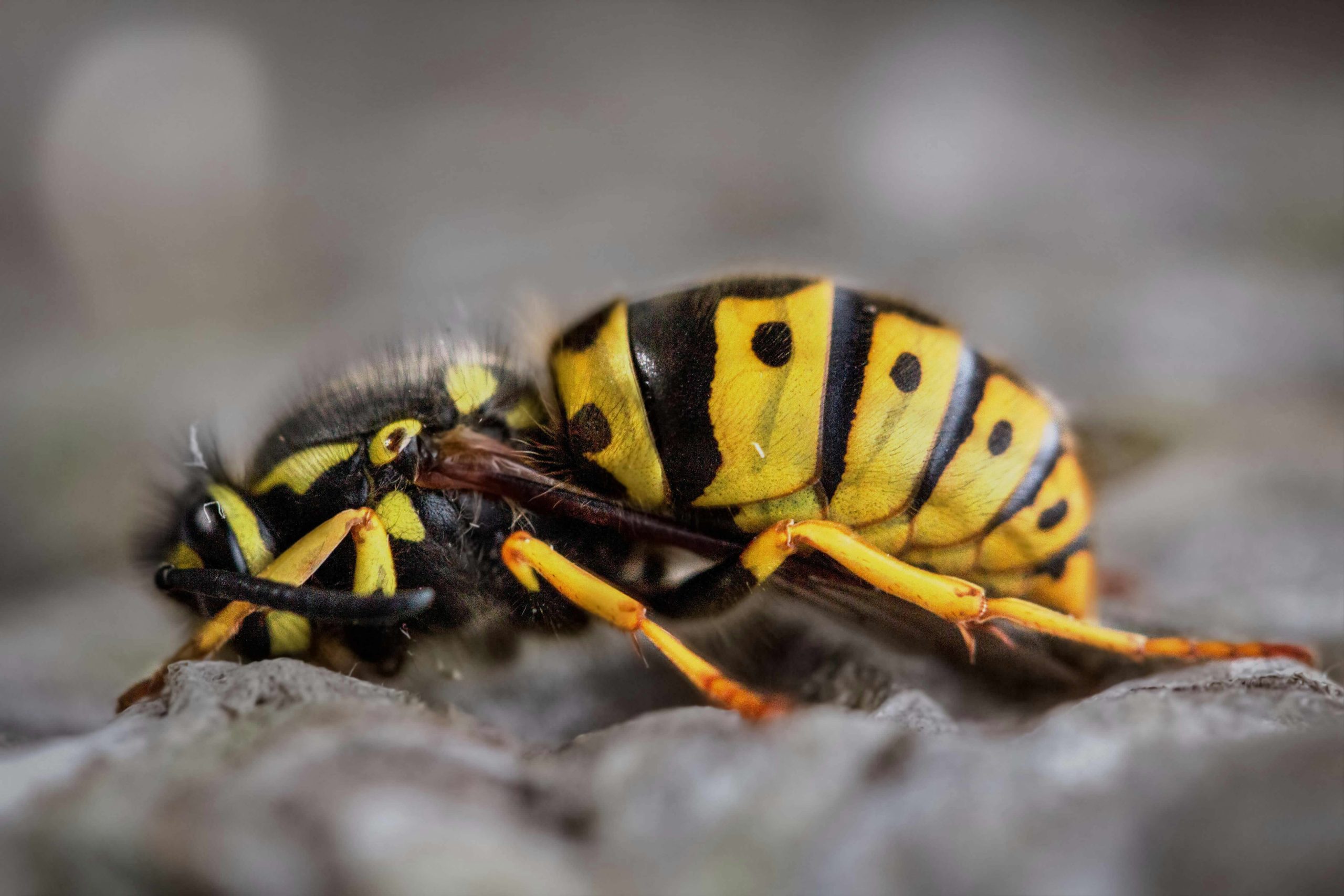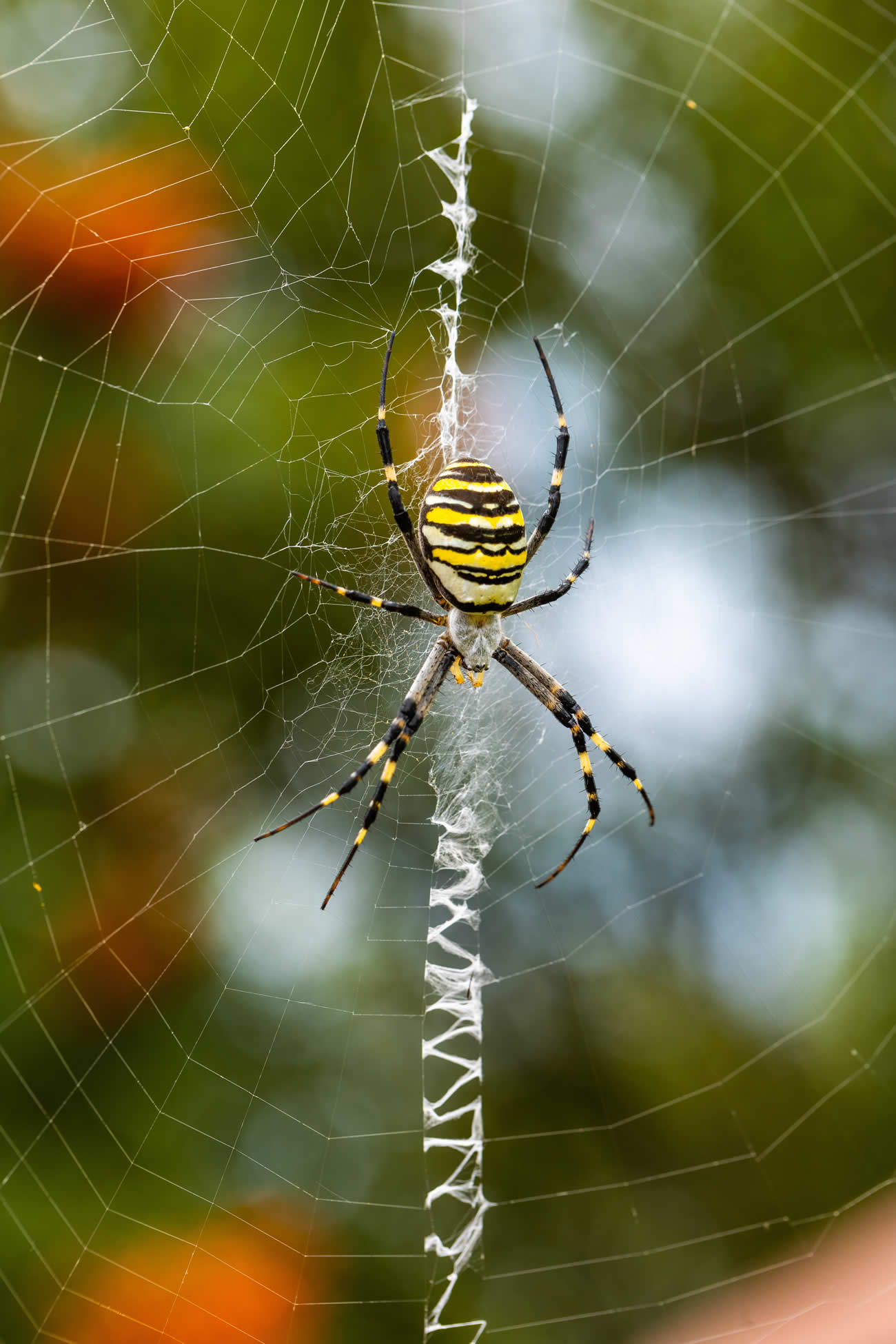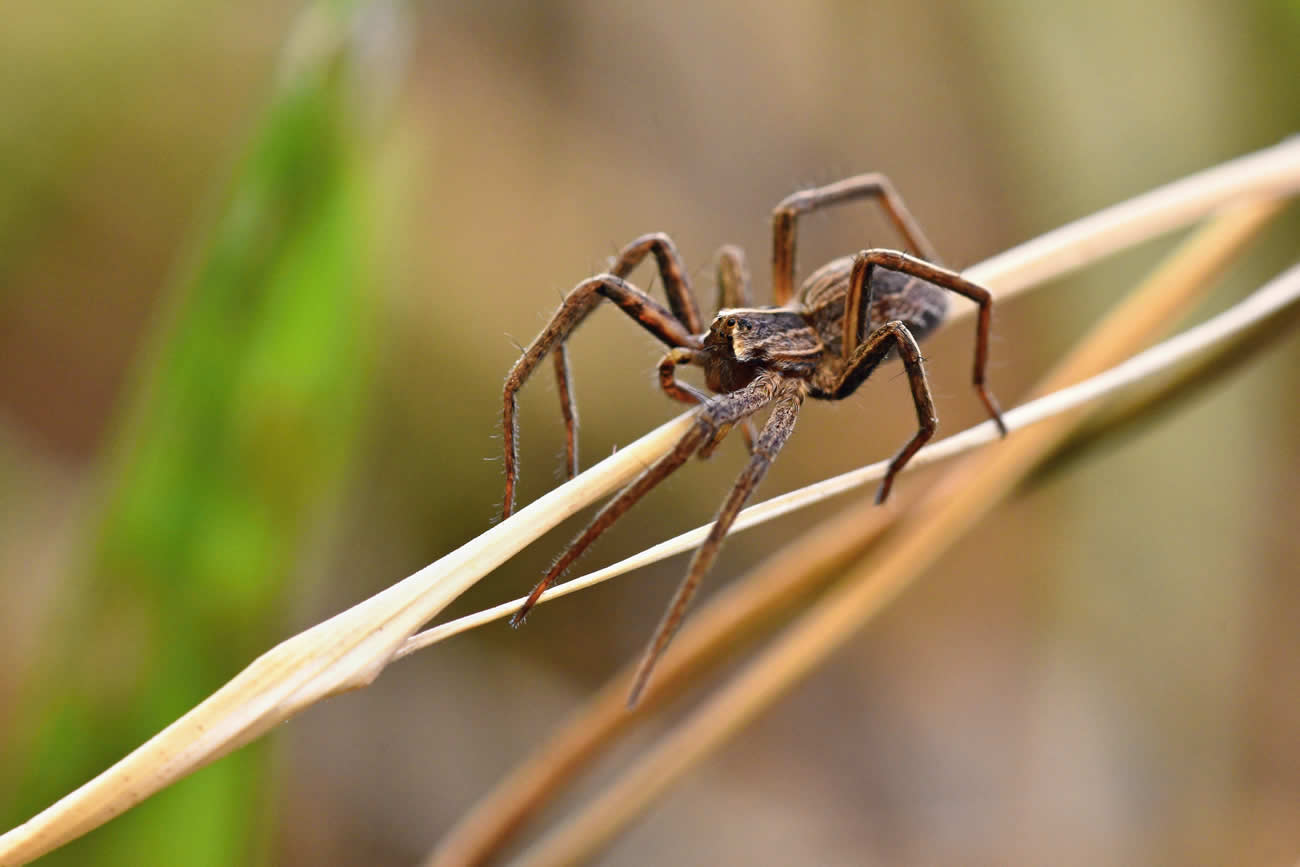Unlike flies with their single pair of wings, wasp flying capabilities come from their remarkable two pairs of wings. While this might seem like a minor detail, these double sets of wings are a defining characteristic that sets wasps apart from many other flying insects.
We often observe wasps darting through our gardens, but their wing anatomy is truly fascinating. These membranous wings, with the forewings being larger than the hindwings, work together to create their distinctive flight patterns. In this article, we’ll explore the intricate details of wasp anatomy, examine how fast wasps can fly, and understand how their unique wing structure enables their impressive aerial abilities. We’ll also compare their wing design with other flying insects to appreciate what makes the wasp body structure so special.
Table of Contents
ToggleWasp Wing Structure and Anatomy
The thorax of a wasp houses its remarkable wing structure, which consists of four membranous wings – two larger forewings and two smaller hindwings. These wings feature relatively few cross veins compared to other insects, making them lightweight yet sturdy.
Two Pairs of Membranous Wings
The forewings, positioned at the front, are notably larger and more powerful than the hindwings. This size difference serves a crucial purpose, as the larger forewings generate primary thrust during flight. Additionally, several muscles and joints connect these wings to the thorax, enabling wasps to adjust their flight patterns with precision.
Wing Coupling Mechanism
Perhaps the most fascinating aspect of wasp wing anatomy is their sophisticated coupling mechanism. During flight, a rolled membrane at the trailing edge of each forewing connects with 20-22 minuscule hook-like structures, known as hamuli, situated along the leading edge of each hindwing. This intricate system synchronises the motion of fore and hindwings, consequently enhancing lift and improving gliding performance. Furthermore, this coupling mechanism acts as a multifunctional joint, allowing the wings to uncouple when at rest.
Wing Membrane Composition
The wing structure comprises several essential components that work together seamlessly. Each wing features a leading edge, a centre vein, and a root vein, all constructed as shell elements. The veins running through the wings provide structural support, whilst the thin membrane between them creates their characteristic buzzing sound.
The bristles present in the wing structure exhibit remarkable engineering. These extremely stiff components feature a high-aspect-ratio conical tubular structure with a substantial Young’s modulus. This design ensures uniform structural stress distribution, making the bristles particularly resistant to fatigue during high-frequency flapping.
The wing surfaces function as porous flat paddles, reducing overall inertial load through a passive shear-based aerodynamic drag-enhancing mechanism. This innovative design allows wasps to generate necessary aerodynamic forces whilst maintaining efficiency. Moreover, the disability of the coupling mechanism can significantly reduce lift and potentially render flight impossible.
How Wasps Use Their Wings
Wasps display remarkable adaptability in their wing usage, adjusting their flight patterns based on specific tasks and environmental conditions. These insects showcase an array of sophisticated flying behaviours that help them navigate, forage, and defend their territory.
Flight Patterns and Speed
Wasps exhibit exceptional control over their flight mechanics, particularly evident in their foraging behaviour. These insects perform intricate learning flights before leaving their nests, flying in precise arcs whilst watching the entrance and shifting their gaze from side to side. As they gain experience, their relocation duration and number of learning flights decrease.
The shape of wasp wings directly influences their flight capabilities. Species with elongated bodies possess pointed wings, enabling superior manoeuvrability. In contrast, stouter wasps feature rounded wings, which facilitate higher flight speeds. These variations in wing design reflect different selective pressures on flight performance, balancing between agility and velocity.
Wing Position During Rest
At rest, wasps fold their two sets of wings parallel to their abdomen. This positioning helps protect the delicate wing membranes and maintains flight readiness. Nevertheless, wasps might alter their wing position in response to environmental factors. Temperature changes can prompt wasps to adjust their wing position.
Territorial Defence Movements
Wasps employ their wings extensively in defensive behaviours, demonstrating a graduated response system to perceived threats. The initial warning signs include wing raising and spreading, which then progress to more aggressive displays. These defensive expressions follow a specific sequence:
- Wing lifting: The wasp adopts an alert posture by raising its wings
- Wing flipping: Quick, individual flips with longitudinally folded wings
- Wing fluttering: Extended series of wing movements whilst maintaining folded position
- Wing buzzing: Rapid vibration of unfolded wings, often accompanied by alarm pheromone dispersal
Most social wasp species actively defend a territory extending approximately 20 feet around their nest. Their defensive flights serve multiple purposes – some wasps conduct non-stinging flights, immediately returning to the nest, whilst others temporarily leave and return later.
The relationship between wing shape and body structure plays a crucial role in flight performance. Research indicates clear correlations between petiole (waist) shape and wing configuration, suggesting that wing shapes evolved under constraints related to the body type they must lift. Therefore, the abdomen morphology becomes a significant factor in understanding wasp flight capabilities.
Wing-Powered Flight Mechanics
The intricate flight mechanics of wasps rely on sophisticated muscular control and precise wing movements. These remarkable insects employ a specialised system where thoracic muscles create vibrations, which subsequently drive wing motion through an advanced lever mechanism.
Wing Beat Frequency
Environmental factors significantly influence wasp wing beat frequency (WBF). As temperature rises, wasps demonstrate higher WBF values, whilst increased humidity leads to lower frequencies. The relationship between body size and WBF follows an inverse pattern – larger wasps with bigger wings maintain lower frequencies.
The ‘clap and fling’ manoeuvre stands out as a distinctive feature of wasp flight mechanics. This technique involves wasps rapidly clapping their wings together and flinging them open approximately 400 times per second. Through this mechanism, wasps generate lift forces five to six times greater than conventional aircraft wings.
Flight Control Systems
The flight control system of wasps comprises three primary components working in harmony:
- Wings generate lift
- Thorax powers wing movements
- Abdomen functions as a secondary control device
The shape of wasp wings directly correlates with their flight capabilities. Research indicates that wasps possessing elongated bodies typically feature pointed wings, enhancing their manoeuvrability. Alternatively, stouter species develop rounded wings, enabling higher flight speeds.
The coupling mechanism exhibits remarkable strength, withstanding forces up to 180 times the insect’s body weight and 40 times the aerodynamic forces experienced during normal flight. This robust design primarily serves to protect against wing collisions with vegetation and other objects during flight.
The flight control system demonstrates asymmetric behaviour between upstrokes and downstrokes. The coupling mechanism’s load-bearing capacity proves approximately five times higher during upstrokes. This asymmetry aligns with the varying aerodynamic force generation between the two stroke phases, allowing wasps to maintain precise control throughout their flight patterns.
Certainly, the wasp’s flight mechanics showcase nature’s engineering at its finest, combining strength, efficiency, and adaptability in a remarkably compact system. Their ability to execute extremely abrupt turns, changing direction within a single body length, highlights the sophistication of their flight control mechanisms.
Comparing Wasp Wings to Other Insects
Among flying insects, wasps stand out with their distinctive wing characteristics that set them apart from their closest relatives. A detailed examination of these differences reveals fascinating adaptations that have evolved over millions of years.
Bee vs Wasp Wing Design
Although both bees and wasps possess four wings, their design varies significantly based on their lifestyle requirements. Wasp wings run parallel to their abdomen when folded down, whereas bee wings rest atop the thorax. The wing coupling mechanism in both species shows remarkable variations, with wasps featuring hooks that are more out-of-plane, relatively larger tips, and less forward tilt.
Bees sport a light coat of downy hair that assists in collecting pollen through static electricity, yet wasps maintain a sleek, aerodynamic profile better suited for hunting. The coupling mechanism’s length ranges from 0.64 mm in yellowjacket wasps to 2.06 mm in great black wasps. This variation directly affects their load-bearing capacity, with longer hooks withstanding higher forces.
Fly vs Wasp Wing Structure
The most striking difference between flies and wasps lies in their wing count. Flies possess only one pair of functional wings, with their hindwings modified into tiny drumstick-shaped structures called halteres. These halteres help flies perform acrobatic flying manoeuvres.
In comparison, wasps maintain two pairs of wings, with the hindwings being notably smaller. Their wing structure exhibits specific adaptations:
- The patterns formed by veins partition wings into domains
- Wings with sparse venation tend to have more rectangular domains
- Higher venation density reduces wing tearing throughout lifespan
The wing membrane composition plays a vital role in flight performance. Wasps demonstrate remarkable load-lifting capacity, varying from one-fifth to almost nine times their bodyweight. This capability stems from three distinct strategies:
- Increased hook numbers
- Enlarged hook size
- Enhanced mechanical design of hooks
These structural differences highlight how each species has adapted its wing design to suit specific survival needs. Wasps’ aerodynamic and nipped waist design perfectly aligns with their hunting behaviour, enabling them to execute precise aerial manoeuvres essential for capturing prey.
Conclusion
Wasps demonstrate remarkable flight capabilities through their specialised four-wing structure. Their sophisticated wing coupling mechanism, which can withstand forces up to 180 times their body weight, sets them apart from other flying insects. These adaptations allow wasps to execute precise aerial manoeuvres essential for hunting and survival.
Throughout this exploration of wasp wing anatomy, we discovered several fascinating aspects:
- Two pairs of membranous wings with specialised coupling hooks
- Advanced flight control systems enabling rapid direction changes
- Wing beat frequencies reaching 400 times per second
- Distinct advantages over single-winged insects like flies
- Specialised adaptations different from their close relatives, bees
Nature’s engineering brilliance shines through wasp wing design, balancing structural strength with aerodynamic efficiency. Their wing structure represents millions of years of evolution, resulting in a perfect blend of speed, agility, and precision. Scientists continue studying these remarkable insects, as their wing design principles could inspire innovations in fields ranging from robotics to aeronautical engineering.
Are you looking for pest control in Lancashire? Get in touch with us and a local pest removal company will be in touch.

